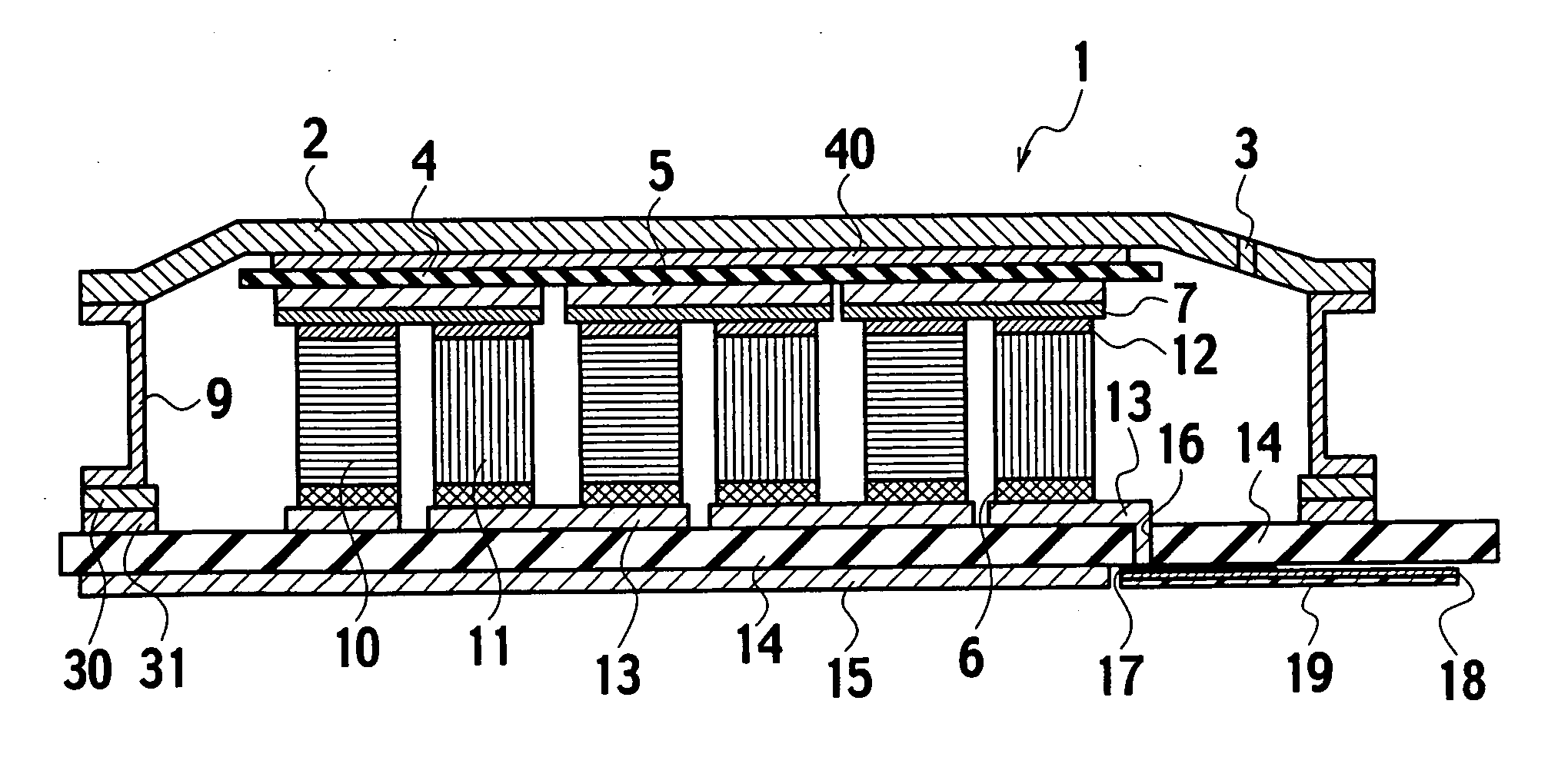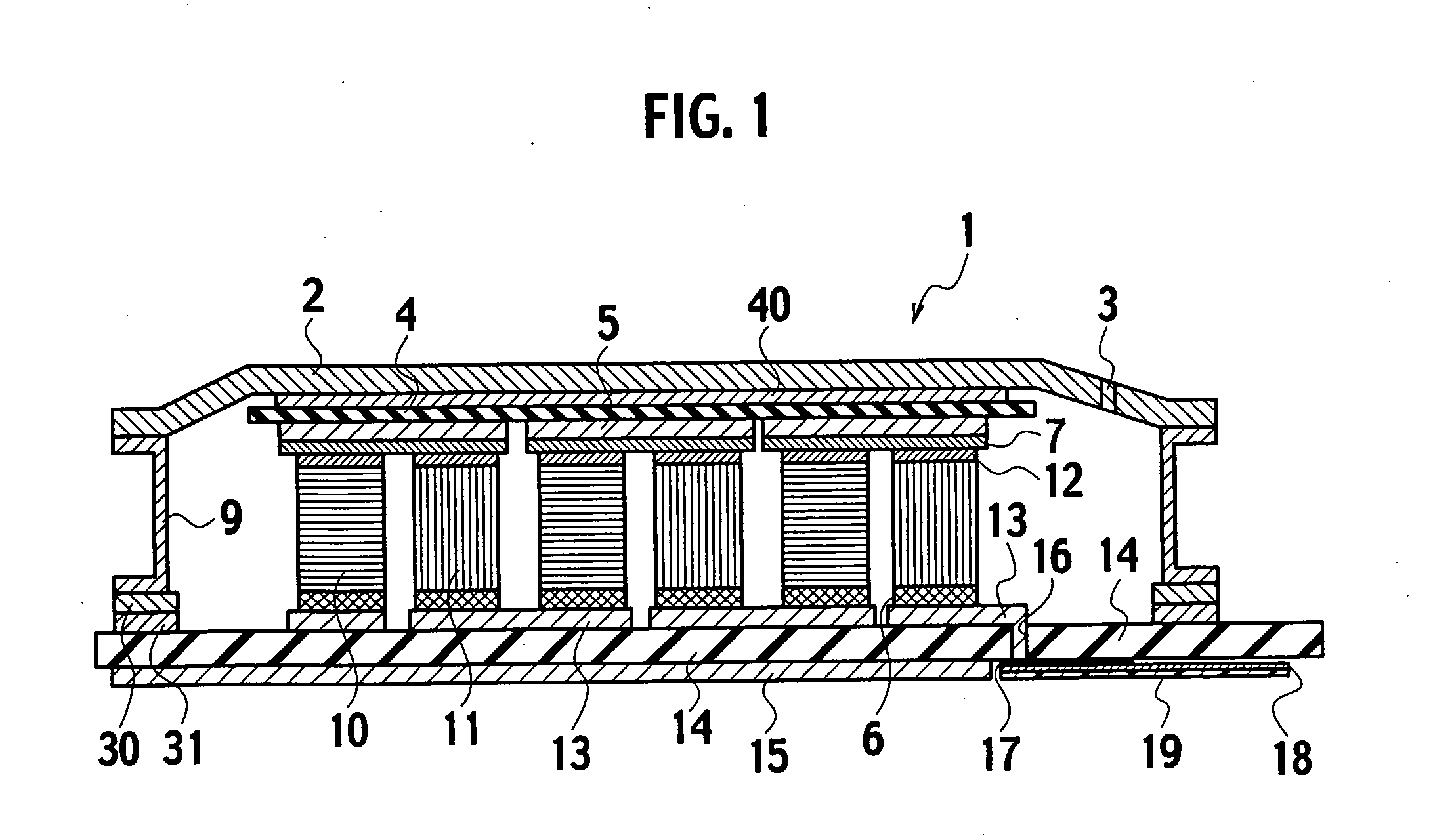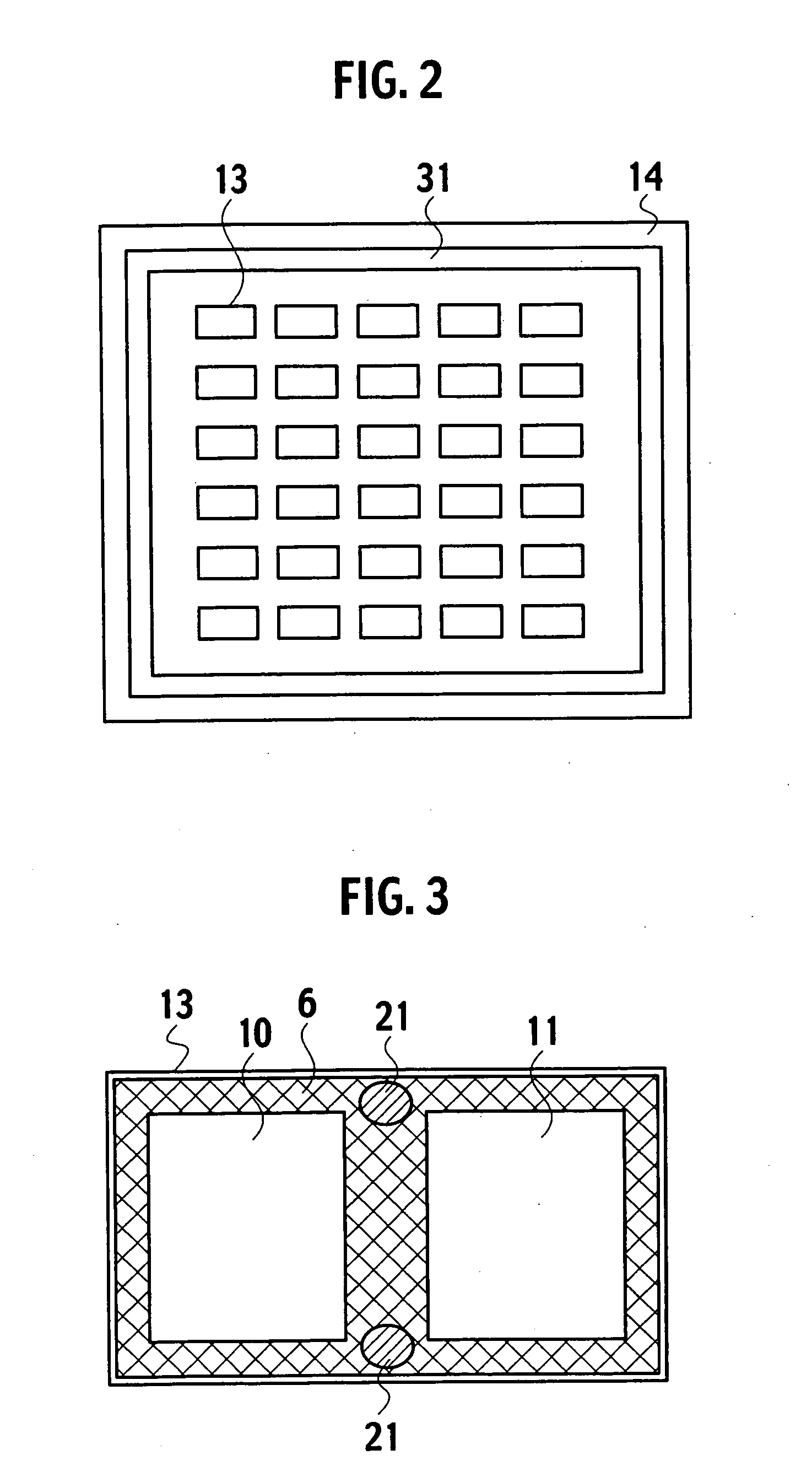Thermoelectric device and method of manufacturing the same
a technology of thermoelectric devices and thermoelectric devices, which is applied in the direction of thermoelectric devices with peltier/seeback effects, thermoelectric devices, etc., can solve the problems of device inability to be used and the range in which the device can be used, and achieve the effect of preventing the reduction of thermal efficiency
- Summary
- Abstract
- Description
- Claims
- Application Information
AI Technical Summary
Benefits of technology
Problems solved by technology
Method used
Image
Examples
Embodiment Construction
[0037] As shown in the cross-sectional view of FIG. 1, a thermoelectric device 1 of this embodiment has a first substrate 14 including a plurality of electrodes 13, a second substrate 4 including a plurality of electrodes 5, and a plurality of p-type thermoelectric elements 10 and a plurality of n-type thermoelectric elements 11 placed between these substrates. Each thermoelectric element 10 or 11 is placed so that one end thereof may correspond to an electrode 13 of the first substrate 14 and that the other end thereof may correspond to an electrode 5 of the second substrate 4. Electrodes 5 and 13 are arranged so that all of the thermoelectric elements 10 and 11 can be connected in series electrically. Further, the thermoelectric elements 10 and 11 are arranged in parallel thermally.
[0038] A surface of each electrode of the first substrates 14 or second substrates 4, one end of each thermoelectric element 10, and one end of each thermoelectric element 11 are plated with gold. In t...
PUM
| Property | Measurement | Unit |
|---|---|---|
| temperature | aaaaa | aaaaa |
| heat resistance | aaaaa | aaaaa |
| diameters | aaaaa | aaaaa |
Abstract
Description
Claims
Application Information
 Login to View More
Login to View More - R&D
- Intellectual Property
- Life Sciences
- Materials
- Tech Scout
- Unparalleled Data Quality
- Higher Quality Content
- 60% Fewer Hallucinations
Browse by: Latest US Patents, China's latest patents, Technical Efficacy Thesaurus, Application Domain, Technology Topic, Popular Technical Reports.
© 2025 PatSnap. All rights reserved.Legal|Privacy policy|Modern Slavery Act Transparency Statement|Sitemap|About US| Contact US: help@patsnap.com



